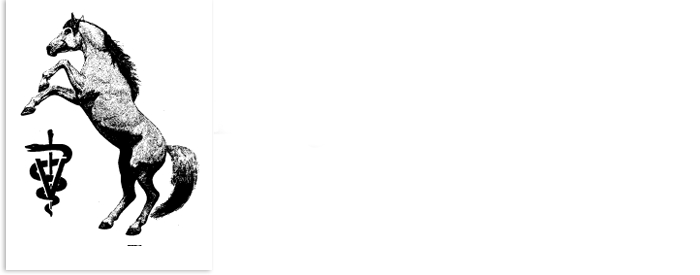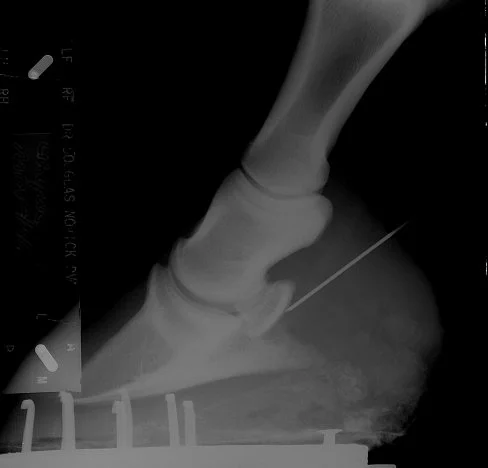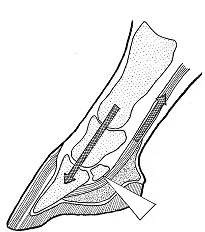Navicular Disease New Treatments
Navicular disease is a disease of the hoof where pain originates in the navicular bone, a small bone just behind the coffin bone. For horses that don’t respond to first line treatments two newer treatments have become more common, navicular bursa injections and treatment with the drug Tildren.
Navicular Bursa Injections
Horses who present like a horse with navicular disease can look exactly like a horse with pain from another structure very close to the navicular bone such as the navicular bursa. That may explain why some horses do not respond to treatment.
The navicular bursa lies between the navicular bone and the deep flexor tendon as it passes over the navicular bone on its way to inserting into the coffin bone. It as a small fluid filled sac, it helps the deep flexor tendon glide over the back of the navicular bone. Navicular bursa injections are done by placing a 3 inch needle through the back of the hoof into the bursa just behind the navicular bone (after sedating the horse and numbing the area with local anesthesia). The correct placement is confirmed via an x-ray. Then medication similar to that used for joint injections is administered into the bursa.
Figure 1: X-ray of needle placed into the Navicular Bursa.
In one study 80% of horses that did not respond to initial treatment for navicular disease became sound within 2 weeks of a navicular bursa injection and on average remained sound for four and half months. The treatment can be repeated, but it will not cure condition.
A second newer treatment is the use of the drug Tildren. In making the diagnosis of navicular disease x-rays of the navicular bone show lesions that are often referred to as “holes” or “lollipops”. In bad cases, a vet might refer to the affected as bone as looking like “Swiss cheese” or “moth eaten”. All these terms refer to signs in the x-rays that show a loss of bone density giving the image small areas of darkness where there is less dense bone in areas where the x-rays should be more dense or whiter.
It may surprise you that bone is ever changing. Your current bones are constantly being reabsorbed then laid down again with fresh calcium containing bone material. The loss of bone density occurs when more bone is reabsorbed then laid down. Tildren, a treatment used for osteoporosis in people, appears to work by interfering with the reabsorption. So over time bone will be laid down but not reabsorbed making the bone denser.
In a study of 50 affected horses most horses responded to Tildren treatment within 2 to 6 months. Horses treated shortly after lameness appeared responded better than horses chronically affected. Tildren has also been used to treat hock arthritis and pain in the thoracolumbar area of the spine caused by vertebra spines interfering with each other.
Figure 2: The navicular bone acts a fulcrum for the deep flexor tendon which pulls on the coffin bone.
In navicular disease a horse has pain in the back part of the hoof from the navicular bone. Affected horses are frequently painful in both front hooves. In many of these cases I am called to examine a horse for a lameness on one leg. I will use local anesthesia to block out the lameness on that leg. Then the horse will then begin to limp on the opposite leg. The reason is that the horse was lame on both front legs. Just one leg hurt more than the other. These horses frequently have short choppy trots. Many have long toes and underslung heels. The difficulty in treatment is that many horses having pain in the navicular bone area, equivocal x-rays, and appear to be a horse with navicular disease may in fact have pain derived from inflammation of another structure.
First line treatment most often involves medication to encourage circulation and decrease pain, corrective shoeing, and injections of the coffin joint. Along with that, and equally important, is physical therapy which encourages the horse to move weight bearing slightly off the front end and on to their hind legs. About 4 out 5 horses will respond to this first line treatment.
The newer treatments of navicular bursa injections and Tildren add additional tools for caring for a horse with navicular disease.



